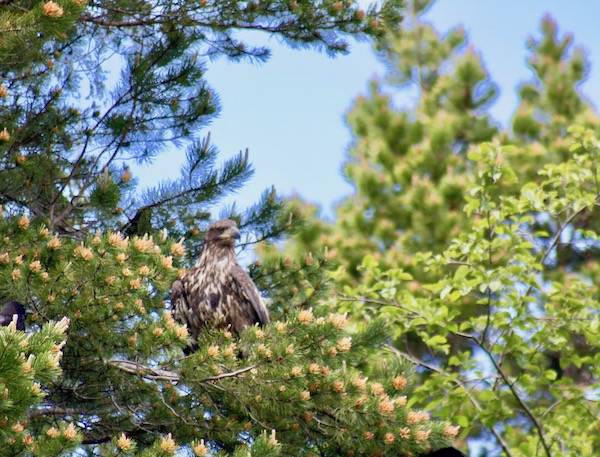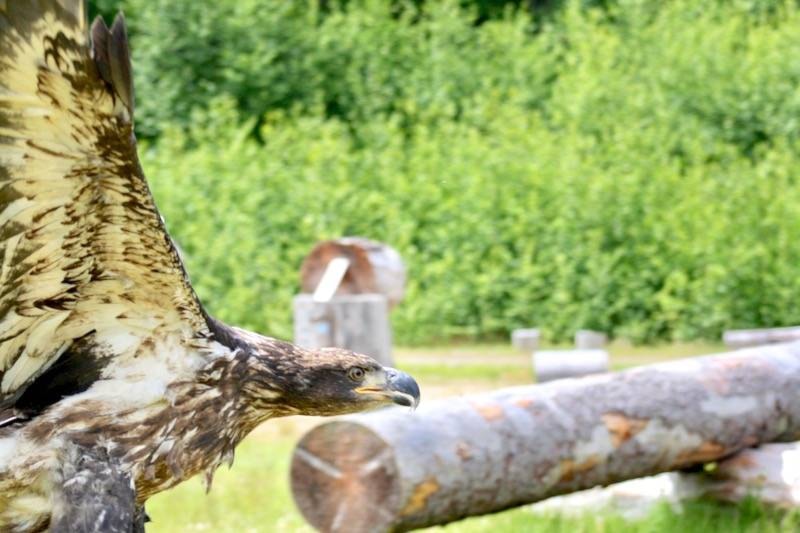Two up, one down.
That was Friday’s eagle count for Leila Riddall, a long-time wildlife rescue volunteer in Masset.
On the same day that two bald eagles were flown back to Masset after surviving lead poisoning and getting covered in food oil, a third was found electrocuted below a power line in Masset with a fish head by its side.
Of all the human hazards eagles face on Haida Gwaii, perhaps the easiest to fix is the habit of leaving fish and deer scraps where the birds can feed on them.
“People think they’re doing them a favour, but they’re not pets,” says Kelly Aitken, a local fishery officer with Fisheries and Oceans Canada.
Aitken said it’s actually illegal to leave fish scraps on boat ramps or anywhere else in the intertidal zone.
Eagles often hurt each other fighting over the scraps, and it’s not uncommon for them to hit a nearby house or power line in the frenzy.
“No one who feeds animals is being mean,” Aitken said. “They just need to understand that it’s leading to something not so good.”
Aitken noted that such eagle deaths actually appear to have declined in Masset, as local fishing lodges have improved their practices.
Using the cleaning station on the Masset Harbour dock is an easy solution, she added, since the scraps fall directly into the deep water below the dock.
A trickier hazard is the use of lead hunting ammunition on Haida Gwaii and Canada at large.
A recent study commissioned by Environment and Climate Change Canada found that across the country, hunters send about 40 to 80 tonnes of lead into the environment each year. Not only is there evidence that eagles and ravens die after ingesting lead from the guts of hunted deer, gun-range shooters show elevated levels of lead in their blood, as do their families.
In contrast to hunting, the study found about 5,000 tonnes of lead is discharged on shooting ranges in Canada every year, and less than 200 tonnes is recovered. Lead exposure and poisoning has been found in wildlife that forage in the highly contaminated areas around shooting ranges.
Because of the health and environmental risk, Denmark, Sweden, and The Netherlands have completely banned lead ammunition. In Canada, only lead birdshot is illegal.
While lead-free steel, tungsten, bismuth, and copper bullets can also be used for hunting, the study found they have very minimal use in Canada, and recreational hunters are unlikely to switch to lead-free bullets voluntarily. Lead-free ammunition for deer hunting is more costly, and is not widely available in stores.

